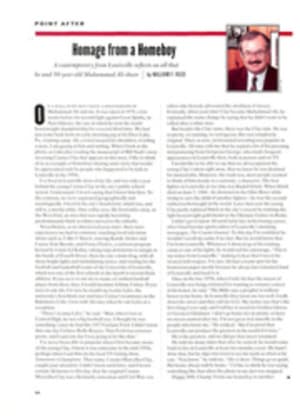
A Mountain of Hassles
To get a ski area built in the U.S. today, a developer needs the concentration of an Ingemar Stenmark, the bullishness of a Phil Mahre, the tenacity of a Tamara McKinney and the cockeyed confidence of a Bill Johnson. For a number of very good reasons—some of them having to do with the stagnant ski industry but more of them having to do with the conservation movement—would-be lift-builders in the 1990s have to jump through hoops before cutting through woods.
Take the people at Keystone (Colo.) Resort, which features the only major-league expansion in the country this winter. The 22-year-old, 1,104-acre ski resort is spread across three mountains 75 miles west of Denver. (The resort also includes Arapahoe Basin five miles away.) The Keystone Mountain section of the resort is a popular spot for families, and the neighboring North Peak area is a favorite of mogul moguls. But the resort's long lift lines and its lack of deep, steep bowl skiing—the kind of powdery, out-there experience that attracts skiers to nearby Vail and Aspen—had drawn criticism over the years.
In an attempt to attract more skiers, Keystone decided a decade ago to develop The Outback on its South Peak. According to the plan, bowls would be plentiful on The Outback's northern and southern faces, and steep intermediate runs would be developed on The Outback's northern face as well. A high-speed quad lift would run to the top on North Peak and a 26,000-square-foot four-restaurant complex reachable by skiers and moon-booted gondola riders alike would be built on that mountain at 10,000 feet.
Keystone executives received a U.S. Forest Service go-ahead in 1984 and began to pursue their dream in earnest. In the intervening years, the resort's parent company, Ralston Purina, has spent $32 million on construction, including $17 million for lifts and $6 million for the restaurant complex. About $3 million—10% of the overall budget—went to solve potential environmental difficulties. Some of the solutions were planned in advance, and some were developed along the way. The Keystone construction team has in the past few years collected a mountain of stories about what it takes to develop a new ski area in the enviro age. Someday, they'll laugh about such matters:
•Because it's no longer politically correct to cut a network of service roads through the forest, Keystone had to airlift building materials and equipment to the site via helicopter—top-dollar transportation.
•Keystone Gulch, at the base of the mountain, is wetlands, according to a U.S. Army Corps of Engineers' environmental impact statement. Therefore, Keystone developers had to work hand-in-hand with the Forest Service in constructing a special bridge over one of the gulch's drainages. As a result, skiers will not disturb the streamflow.
•Five tons of fescue, white clover and rye grass seed had to be sown in a revegetation effort aimed at curbing erosion. Spruce trees were planted among the lodge pole pines, making for a more diverse and therefore more resilient forest. A decision was made to design much of The Outback's ski acreage as "glades"—that is, slightly pruned woods. In all, flora maintenance, i.e., gardening, in the 312-acre area cost the developers more than a half-million dollars.
•Eight miles of sedimentation fencing had to be constructed to keep streams, which feed both water and foot-long trout to the Snake River, pristine. In fact, the developers agreed to donate a ton of new trout to the local waters. A $2 million sewer system was installed at The Outpost restaurant, which has its own wells and water treatment facility.
•A herd of more than 100 elk was discovered in the area. The animals spend the winter near Lake Dillon, six miles away, but return to Keystone Mountain and the surrounding area for the summer months. Salt blocks were distributed in an attempt to keep the elk from the construction site, but the animals were resolute about staging their spring calving on the slopes. "So we curtailed construction to 10 hours a day," says Boyd Mitchell, Keystone's mountain operations director. "And we told the workers to leave their dogs and boom-box stereos at home."
For all that, Keystone was extraordinarily lucky when it came to the environment. If, for example, the elk had been partial to the mountain in wintertime, the whole scheme might have been scotched. The Outback, which is included in Keystone's daily $37 adult lift tariff, is up and running, though the official grand opening of the area will not be celebrated until Jan. 17—or celebrated by some. Any man-carved trail is anathema to hardcore conservationists. These people view The Outback as nothing less than an obscenity. But the U.S. government laid down the rules, and the Keystone folks abided by them. And because they did, one more American mountain will probably become a haven for skiers.

